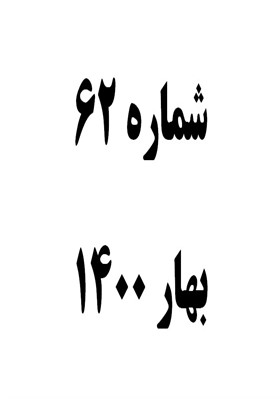بررسی وضعیت فرهنگی و تمدنی شهر قم در دو دوره صفویه و قاجاریه
محورهای موضوعی : مباحث معرفتی و روش شناختی و تاریخ پژوهی
1 - آموزش وپرورش
کلید واژه: قم, صفویه, قاجاریه, فرهنگی, تمدنی,
چکیده مقاله :
هدف تحقیق حاضر به بررسی وضعیت فرهنگی وتمدنی شهرقم در دو دوره صفویه وقاجار و آثار ومصادیق مرتبط با آن می پردازد. با پیدایش حکومت صفویان بخاطر شرایط سیاسی – اجتماعی که بوجود آمد جمعیت تشیع به شدت افزایش یافت چنانکه در عهد صفویه جمعیت ایران به نفع شیعیان تغییر یافت و مذهب تشیع برای اولین بار صورت رسمی بخود گرفت. شهر قم در این دوره در زمینههای سیاسی اقتصادی و فرهنگی به اوج شکوفایی و آبادانی رسید بطوریکه اکثر آثار تاریخی و مدارس علمیه قم مربوط به همین دوره است. در واقع پس از تصرف این شهر توسط شاه اسماعیل صفوی اکثر پادشاهان این سلسله به قم آمده و مدتی را در آن می ماندندوهمین امر باعث رشددرابعاد مختلف فرهنگی وتمدنی شده است. در دوره قاجار در برخی از شاخصه های فرهنگی وتمدنی مانند مدارس سرعت پیشرفت کند می شود و بیشتر به تجدید بنا ویا ترمیم آثاروابنیه تاریخی محدود می شود.
The purpose of this study is to investigate the cultural and civilian status of Qom city in two periods of Safavid and Qajar and related works and related examples. With the advent of the Safavid regime, due to the socio-political conditions that arose, Shi'ism increased sharply, as during the Safavid period, the Iranian population changed in favor of the Shi'ites, and the Shi'i religion first became formal. During this period, the city of Qom reached the peak of flourishing in the political and economic fields, as most of the historical monuments and schools of Qom are related to the same period. In fact, after the capture of this city by Shah Isma'il Safavi, most of the kings of this dynasty came to Qom and remained for a while, which has led to growth in various cultural and civilian dimensions. In the Qajar period, progress in some of the cultural and civilization characteristics of schools, such as schools, is slowing down, and more is limited to the restoration or restoration of works and historical buildings.
_||_

